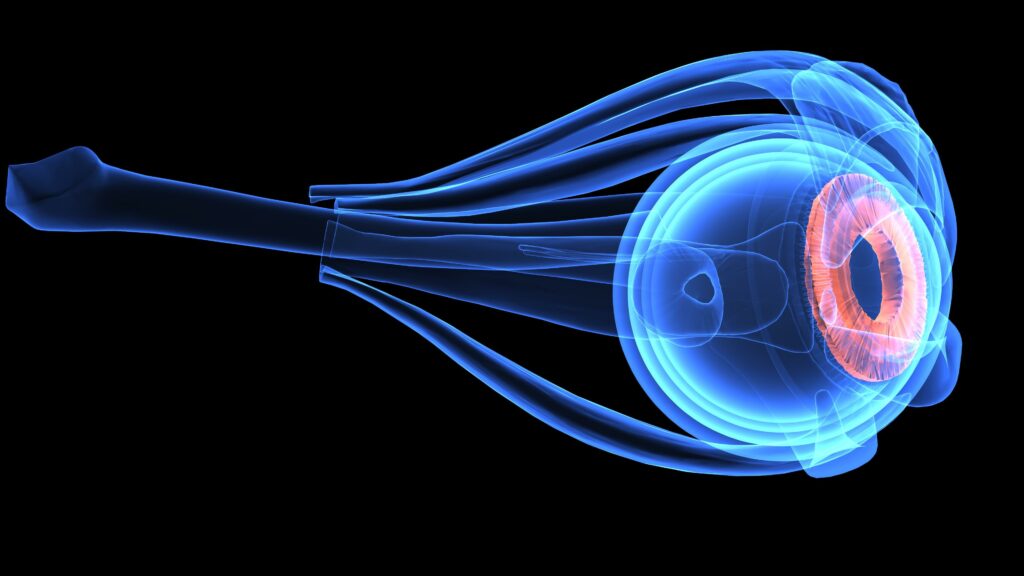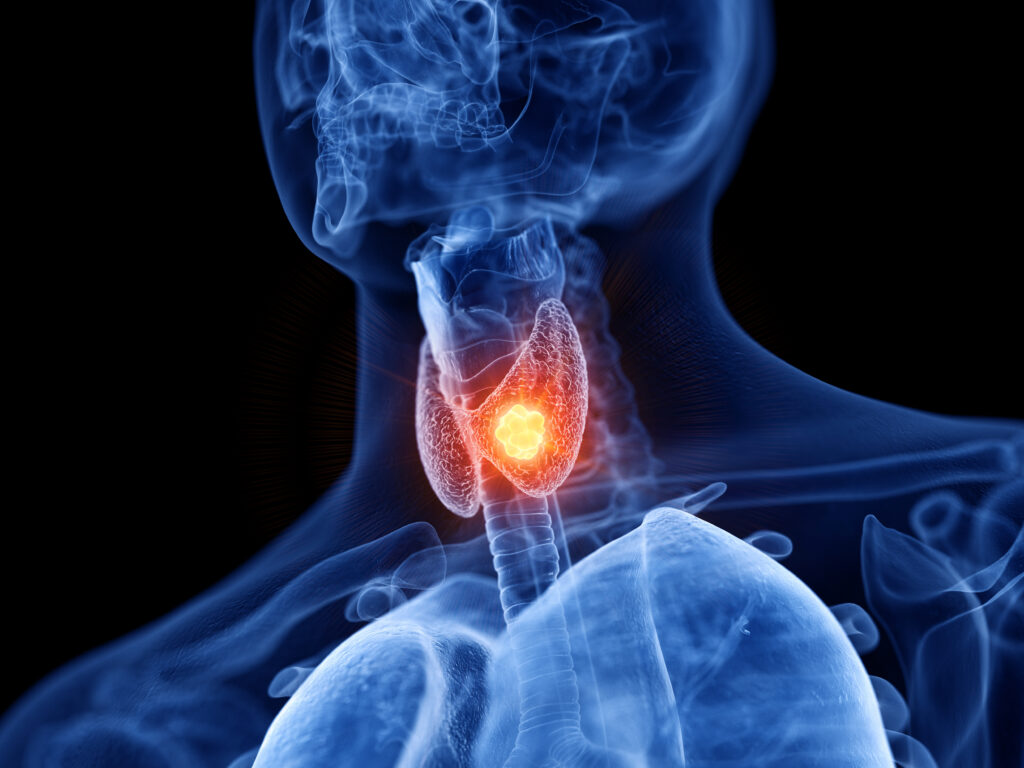Case presentation
A 26-year-old woman with differentiated papillary thyroid carcinoma received 192 mCi of radioiodine 131 (I-131) under recombinant thyroidstimulating hormone (TSH) treatment for persistent upper mediastinal metastasis. Radioiodine whole-body scintigraphy (WBS) was performed nine days later and showed targeting of the I-131 at the mediastinal metastasis, but also demonstrated an additional focus of significantly increased uptake near the scalp (see Figure 1). Repositioning of her coiffure by the nuclear medicine technologist revealed the source of uptake to be the hair; there was also slightly increased uptake at the fingertips. Further history was later obtained from the patient and revealed a hair-sucking habit.
Discussion
Cutaneous metastases are a rare manifestation of differentiated thyroid carcinomas1 and typically signify advanced disease with poor prognosis.2–4 When present, the scalp is the most common site of cutaneous thyroid cancer metastases.2,4–7 Such lesions are usually evident on physical exam as erythematous, purple, or non-pigmented plaques or nodules,2–5,7 but can also mimic other dermatologic conditions such as topical infections, benign cysts, alopecia, or other cutaneous malignant neoplasms.8 In this case, the mobility of the high-uptake focus upon hair repositioning and the additional historical details established the false-positive nature of the I-131 uptake. If the source had not been clearly elucidated by repositioning, fusion single-photon emission computed tomography/ computed tomography imaging could have been utilized for improved localization and characterization of the focus.9
Physiologic I-131 uptake can be visualized in:
• tissues that concentrate iodine, e.g., tissues expressing the sodiumiodide symporter which include the thyroid (or ectopic thyroid tissue), salivary and mammary glands, bowel, lung, and nasal mucosa;
• tissues where thyroid hormones and thyroglobulin are degraded, i.e., the liver; or
• in radioiodine excretory products including urine, feces, saliva, and sweat.10,11
Also, there can be increased I-131 uptake at sites of unrelated pathologic processes, including:
• inflammation or trauma, as a result of increased blood flow and capillary permeability; or
• other benign or malignant tumors, typically due to functional sodium-iodide symporter expression.11

(A) Whole-body scintigraphy performed nine days after receiving 192 mCi of radioiodine 131 demonstrates uptake in the upper mediastinum metastasis (red arrow) and in an unexpected focus near the scalp (blue arrow); (B) repositioning of the coiffure identifies the source of this unexpected focus of uptake; (C) uptake is also demonstrated on the bilateral fingertips.
Contamination of external sites with secretions or excretory products can mimic metastases and yield false positives at a rate of 0.3% in the head and neck.12
Conclusion
As illustrated in this case, a focus of increased I-131 uptake at a site rarely associated with metastases from differentiated thyroid cancer should prompt consideration of alternate etiology, such as contamination from secretory or excretory products. Accurate interpretation of this I-131 WBS was aided by the repositioning technique employed by the nuclear medicine technologist; such strategy may prevent unnecessary workup for metastases in other cases.













